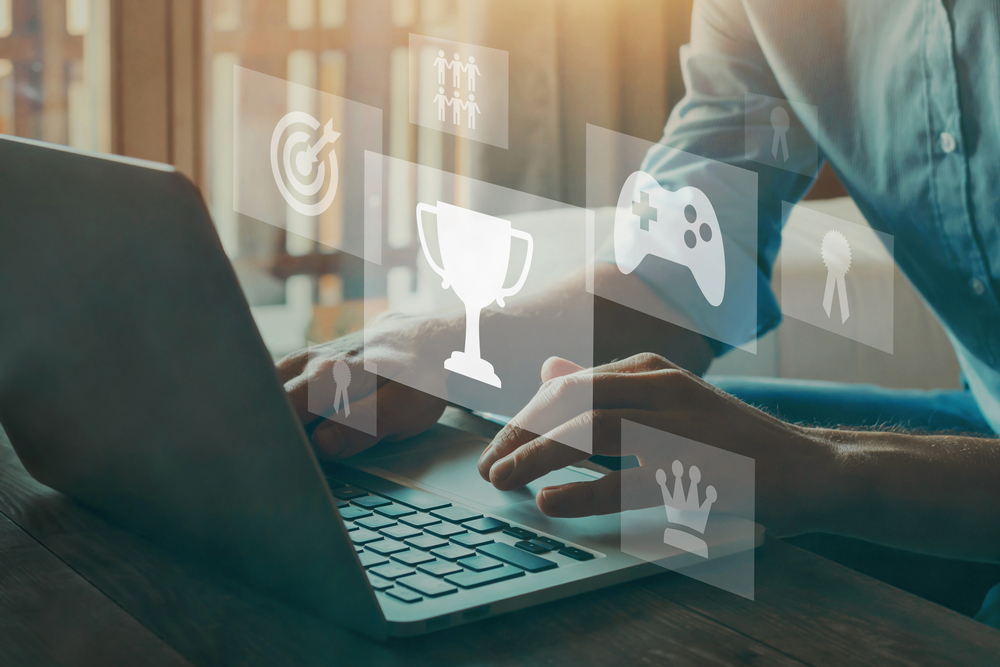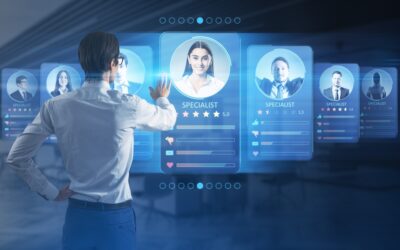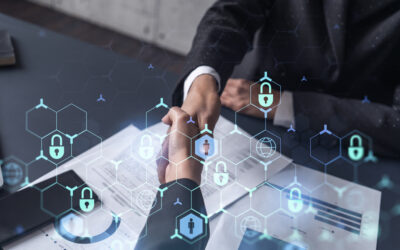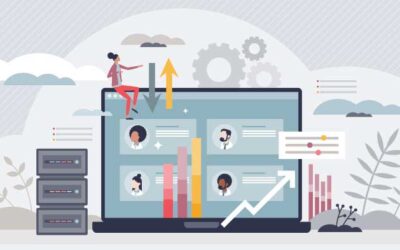The Concept of Gamification
Gamification is the application of game-like elements to non-game contexts. It is not about turning tasks into games, but rather infusing game mechanics into existing processes to make them more engaging and motivating. The origins of gamification can be traced back to loyalty programs and frequent flyer points, but it has only been in recent years that the term has gained significant traction, especially in the corporate world.
The underlying psychology of gamification hinges on the human desire for achievement, competition, and recognition. When individuals are presented with challenges, levels, scores, and rewards, they are naturally inclined to participate and excel. This drive is deeply rooted in human behavior, making gamification a powerful tool, especially in areas where motivation and engagement might be lacking.
HR professionals constantly seek innovative ways to engage employees, streamline processes, and enhance productivity. Gamification offers a solution that not only addresses these challenges, but does so in a manner that resonates with the modern workforce. By tapping into the playful and competitive nature of individuals, gamification transforms mundane tasks into exciting challenges, making the journey as rewarding as the destination.
Here are some examples of how gamification is being used in the workplace:
- To increase employee engagement in training programs.
- To improve customer service.
- To promote employee health and wellness.
- To encourage innovation and creativity.
Gamification is a powerful tool that can be used to improve a variety of business outcomes. It is important to note, however, that gamification is not a silver bullet. It is only effective when it is used in a way that is aligned with the organization’s goals and objectives.
The Intersection of Gamification and HR
The field of Human Resources (HR) has always been about people – understanding them, motivating them, and ensuring they are at their productive best. As industries evolve, HR professionals continuously seek innovative methods to engage their workforce. Enter gamification, a strategy that infuses elements of game playing into non-game scenarios.
At its core, gamification taps into the inherent human desire for competition, achievement, and recognition. By introducing game mechanics like points, badges, and leaderboards into HR processes, companies can ignite a sense of achievement and competition among employees. But it is not just about making work “fun.” It is about harnessing the motivational power of games to drive real-world outcomes.
Recruitment is one of the first HR processes to embrace gamification. Instead of traditional interviews and assessments, companies started using game-based assessments to gauge a candidate’s skills and cultural fit. These games, often designed to mimic real-world job tasks, offer a dual benefit. They provide candidates with a unique, engaging experience while giving employers deeper insights into a candidate’s abilities.
Employee onboarding and training soon followed suit. Instead of passive training modules, new hires could now embark on interactive, game-like learning journeys. These gamified modules not only enhance knowledge retention but also accelerate the onboarding process, ensuring that employees are job-ready in a shorter span.
But the influence of gamification does not stop at recruitment and training. Employee engagement, a perennial challenge for HR, found a formidable ally in gamification. By turning mundane tasks into competitive challenges or by recognizing and rewarding top performers through gamified platforms, companies witnessed a surge in employee motivation and productivity.
Gamification is a powerful tool that can be used to improve employee engagement, productivity, and learning. It is a relatively new field, but it is rapidly growing in popularity as companies realize the benefits it can offer.
Tools of the Trade: Platforms and Technologies
As companies recognize the potential of gamification to boost engagement and productivity, a plethora of platforms and technologies have emerged, each promising to transform HR processes.
One of the frontrunners in this space is Badgeville. Known for its dynamic engagement platform, Badgeville offers customizable gamification solutions tailored for businesses. From onboarding to performance reviews, their platform integrates game mechanics seamlessly into HR workflows.
Another notable mention is Bunchball. Their Nitro platform is a favorite among HR professionals, offering a blend of analytics and gamification tools. With Bunchball, companies can set up challenges, award points, and even establish leaderboards, turning mundane HR tasks into engaging activities.
For those looking for a more comprehensive solution, GamEffective is worth exploring. This platform not only offers gamification tools but also integrates with learning management systems. This dual approach ensures that training and development are not only engaging but also effective.
Kahoot! might be known to many as an educational tool, but its application in the corporate world, especially HR, is growing. Companies are using Kahoot! for everything from training quizzes to employee surveys, leveraging its interactive format to gather insights and feedback.
Lastly, Mambo.IO offers a flexible platform that can be tailored to a company’s specific needs. With its open API, Mambo.IO can be integrated with existing HR systems, ensuring a seamless gamification experience.
While these are just a few of the many platforms available, they highlight the diversity and potential of gamification tools in the HR space. The key for companies is to identify their specific needs and choose a platform that aligns with their objectives. As the world of HR continues to evolve, these digital tools will undoubtedly play a pivotal role in shaping the future of employee engagement and productivity.
Gamifying Recruitment: Making Hiring Fun
The recruitment process, traditionally seen as a tedious and often stressful phase for both employers and potential employees, is undergoing a transformation. Enter gamification, the strategy that’s making waves in the HR world by making hiring not just efficient but also enjoyable.
At its core, gamification involves applying game design elements in non-game contexts. In the realm of recruitment, this means turning the usual resume-screening and interview processes into engaging, interactive experiences. But how exactly does this work?
Skill-Based Assessments Over Resumes
Instead of solely relying on resumes, which often don’t paint the full picture of a candidate’s capabilities, companies are using game-based assessments. These assessments, designed like games, test a candidate’s skills in real-time scenarios. For instance, a coding challenge game for a software developer role or a virtual sales pitch for a sales position. Such games provide tangible evidence of a candidate’s abilities, making the selection process more merit-based.
Unbiased Hiring
One of the significant advantages of gamified recruitment is its potential to eliminate unconscious biases. Since game-based assessments focus on skills and not resumes, factors like a candidate’s background, age, or gender become irrelevant. This paves the way for a more diverse and inclusive workforce.
Engaging the Digital Natives
Today’s job market is dominated by millennials and Gen Z, individuals who’ve grown up in the digital age. For them, gamified recruitment isn’t just fun; it’s familiar. By offering a recruitment process that resonates with their digital experiences, companies position themselves as forward-thinking employers, attracting top young talent.
Feedback and Analytics
Gamified recruitment platforms often come with analytics tools. These tools provide instant feedback to candidates, letting them know their strengths and areas for improvement. For employers, these analytics offer insights into a candidate’s performance, aiding in making informed hiring decisions.
Training and Development: Leveling Up Skills
Gamified training modules are not just about adding points and badges; they’re about creating an immersive learning experience that resonates with the modern workforce.
Traditional training methods, while effective, often lack the engagement factor. Employees might find themselves zoning out during long training sessions or skipping modules altogether. Enter gamification, which infuses the training process with elements like challenges, rewards, and interactive scenarios. These elements not only make learning fun but also ensure better retention of information.
For instance, consider a sales training module. Instead of just reading about sales techniques, employees could be placed in a virtual store environment where they interact with customers, handle objections, and close sales. Each successful interaction earns them points, and they can compare their scores with peers on a leaderboard. Such an approach not only reinforces learning but also instills a sense of healthy competition.
A notable benefit of gamified training is its adaptability. Modules can be tailored to suit different learning paces. Those who grasp concepts quickly can move on to advanced levels, while others can spend more time on foundational topics. This personalized approach ensures that every employee gets the most out of the training.
But it’s not just about individual growth. Companies stand to gain significantly from gamified training.
Employee Engagement: Quests, Badges, and Leaderboards
In the field of human resources, employee engagement is often the key to productivity, retention, and overall workplace satisfaction. However, how can one keep modern employees engaged, especially in an era of dwindling attention spans? Enter the world of quests, badges, and leaderboards.
Quests: The Journey to Mastery
Quests in the workplace are not about slaying dragons or finding hidden treasures. Instead, they represent a structured path to skill acquisition or task completion. By breaking down larger tasks or training modules into smaller, manageable quests, employees feel a sense of progression. Each completed quest not only signifies mastery over a particular skill but also brings with it a sense of accomplishment.
Badges: Symbols of Achievement
Badges serve as visual tokens of an employee’s achievements. Whether it is for completing a challenging project, mastering a new software, or consistently meeting targets, badges offer tangible recognition. In a digital workspace, these badges can be showcased on internal profiles or even shared on professional networks, adding a layer of external validation.
Leaderboards: Healthy Competition and Recognition
Leaderboards tap into the innate human desire for recognition and a bit of friendly competition. By showcasing top performers in various categories, leaderboards motivate employees to put in their best. It is not just about competition; it is about recognizing effort and achievement. For instance, a leaderboard could highlight individuals who have taken the most training modules or those who have received consistent positive feedback from peers.
However, it is essential to strike a balance. While leaderboards can motivate, they should not create a cutthroat environment. The focus should always remain on personal growth, collaboration, and the collective success of the team.
Incorporating these gamified elements into HR processes does more than just boost engagement. It creates a culture where achievements are recognized, skills are honed, and every employee gets a chance to shine. As companies continue to explore the vast potential of gamification, it is clear that the future of HR is not just about work; it is about making work play.
Productivity and Performance: The Competitive Edge
Gamification, at its core, taps into the inherent human desire for competition, achievement, and recognition. By introducing game-like elements such as points, badges, and leaderboards into everyday tasks, companies can ignite a sense of competition among employees. This isn’t about pitting employees against each other in a negative way. Instead, it’s about fostering a healthy competitive spirit that encourages individuals to outdo their personal bests.
One of the standout benefits of gamifying productivity is the immediate feedback loop it creates. Employees no longer have to wait for quarterly reviews to know where they stand. A real-time leaderboard, for instance, can show them how they’re performing in comparison to their peers, offering instant motivation to step up their game.
Moreover, gamification can be tailored to align with specific key performance indicators (KPIs). Whether it’s the number of sales calls made, customer tickets resolved, or projects completed on time, gamified systems can be customized to track and reward these metrics. This ensures that the company’s broader objectives are always front and center.
However, it’s not just about competition. Collaboration is equally celebrated in a well-designed gamified system. Team challenges or group quests can foster teamwork and collective problem-solving, ensuring that while individuals strive for personal excellence, the team’s goals are never sidelined.
Gamification offers companies a dynamic tool to boost both productivity and performance. By making work more engaging and introducing a competitive edge, employees are not just motivated to perform; they’re excited to. And in today’s fast-paced corporate world, that excitement is worth its weight in gold.
Potential Pitfalls and How to Avoid Them
While gamification in HR holds immense potential to revolutionize employee engagement and productivity, it’s not without its challenges. Like any strategy, if not implemented thoughtfully, it can backfire, leading to unintended consequences.
Overemphasis on Competition
One of the primary attractions of gamification is the element of competition. However, an excessive focus on competition can create a toxic work environment. Employees might prioritize winning over collaboration, leading to a decrease in team cohesion. To counteract this, companies should balance competitive elements with collaborative ones, ensuring that teamwork isn’t compromised.
Superficial Engagement
Badges, points, and leaderboards can initially boost engagement. Still, without real value or meaningful rewards attached to them, this engagement can be superficial. It’s essential to ensure that the rewards in a gamified system align with employees’ values and motivations. For instance, instead of just digital badges, consider tangible rewards or opportunities for professional growth.
One Size Doesn’t Fit All
Gamification strategies that work for one demographic might not resonate with another. For example, a younger workforce might be more receptive to certain game mechanics than an older demographic. Companies need to tailor their gamification strategies, keeping in mind the diverse makeup of their workforce.
Privacy Concerns
With gamification platforms collecting data on employee performance and behavior, privacy becomes a concern. Companies must be transparent about the data they collect and ensure they comply with data protection regulations. Regular audits and feedback sessions can help in addressing any privacy-related concerns employees might have.
Over-reliance on Technology
While gamification platforms offer numerous benefits, an over-reliance on them can lead to the neglect of human touch in HR processes. It’s crucial to remember that technology should aid human decision-making, not replace it. Regular face-to-face interactions and feedback sessions should complement gamified processes.
The Road Ahead: Future Trends in Gamified HR
As the digital age progresses, the fusion of gamification and HR continues to evolve, promising innovative solutions to age-old challenges. The journey of gamification in HR has just begun, and the road ahead is paved with exciting trends and possibilities.
Augmented Reality (AR) Meets Gamification
The integration of AR into gamified HR modules is on the horizon. Imagine an onboarding process where new employees, using AR glasses, embark on a virtual treasure hunt around the office, learning about company culture, meeting team members, and understanding their roles in an interactive manner.
Personalized Gaming Experiences
With the rise of big data and AI, HR platforms will soon offer tailored gaming experiences. Based on an employee’s past interactions, preferences, and learning pace, the gamified modules will adapt in real-time, ensuring maximum engagement and retention.
Social Gamification
The future will see a surge in platforms that combine social media elements with gamification. Employees could share their achievements, challenge peers, and collaborate on team quests, all within a gamified social network tailored for the workplace.
Ethical Gamification
As gamification becomes more prevalent, there will be a heightened focus on ethical considerations. Companies will prioritize creating games that are inclusive, free from biases, and respect individual privacy.
Continuous Feedback Loops
Feedback is a crucial element of any game. In the context of HR, gamified platforms will incorporate continuous feedback loops. Employees will receive real-time feedback on their performance, training modules, or any other HR activity, ensuring constant growth and improvement.
The fusion of technology and gamification in HR is set to redefine employee experiences. While the tools and platforms will evolve, the core objective remains the same – to create a motivated, engaged, and productive workforce. As companies navigate this exciting terrain, they’ll discover new ways to harness the power of games, ensuring a brighter and more interactive future for HR.




